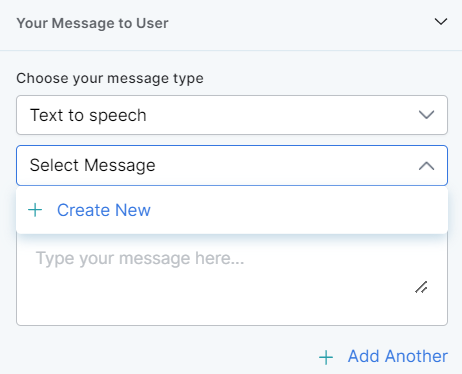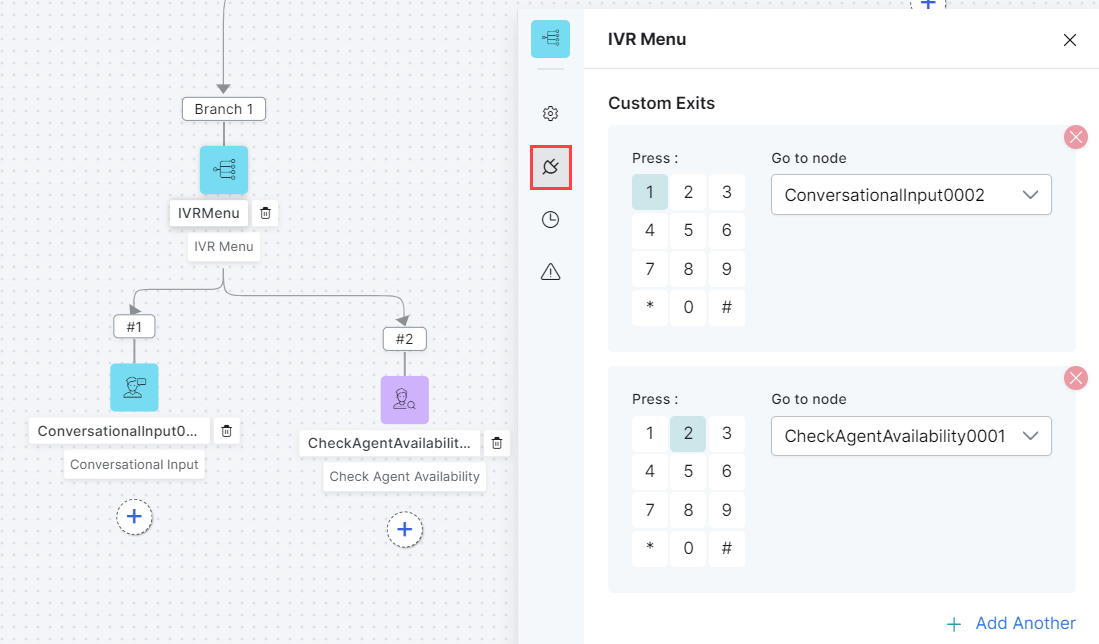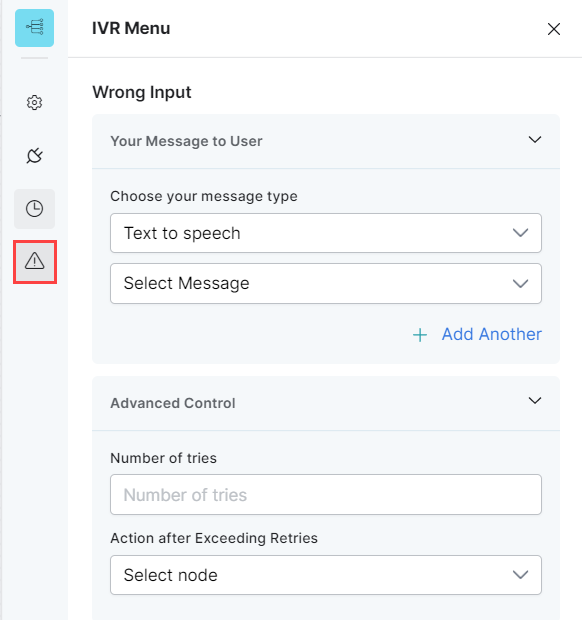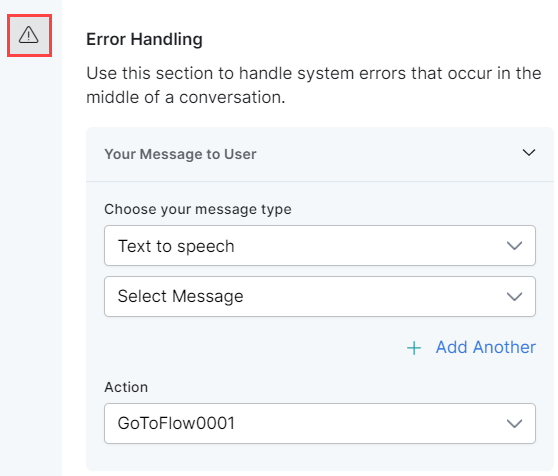An IVR menu node allows you to create a standard IVR menu that can be presented to customers during inbound calls. Adding this node helps route the customer to the relevant call experience based on the key they input.
For example, in the case of a travel agency, pressing ‘1’ will route the customer to the booking update flow, pressing ‘2’ will execute the booking cancellation flow, and so on.
To configure the IVR Menu node, you must set up the following:
General Settings
Click the General Settings icon and provide the following information:
- The Custom Name: This is the name by which you will identify the node within the flow.
- Your Message to User: The message that will be played to the customer via the IVR. Select one of the following options from under Choose your message type:
- Text to speech: This option allows you to transcribe text to speech. Type the text to be transcribed in the textbox or select an already configured message.
- Create a new prompt message to be played out for the Text to Speech message type by clicking + Create New. Enter a name for your message, type its contents and select the language.
- Define multiple message types for the prompt message to be played to the customer by clicking + Add Another. In this case, one message will be randomly selected and played during runtime.

- Audio File: You can type a new message to be played to the customer in the text field or click + Upload New to upload an audio file (.mp3 or .wav format) with the message to be played.

- Link: Click + Create New to add the text of the message you want to play to the customer and insert the URL of an audio file in .mp3 or .wav format. Click + Add Another to add another message URL.

- Enable or disable Barge In.
- Text to speech: This option allows you to transcribe text to speech. Type the text to be transcribed in the textbox or select an already configured message.
Custom Exits
Click the Custom Exits icon to add one or more custom exit points for the contact flow.
For this, select the digit/key and the node to which it needs to be mapped. When mapping nodes, one of the following situations occurs:
- You can select a node type from the dropdown list; in this case, a new node of that type will be created and linked to your current IVR Menu node. You can configure this newly added node later.
- Alternatively, you can identify and select an existing node; in this case, the IVR Menu node will be connected to the selected node.

- You can add multiple custom exits by clicking + Add Another and selecting the required digit and the node.
- You can delete a custom exit by clicking the x icon on the right.

Timeout
Click the Timeout icon to set up the timeout flow with the following fields:
- TimeOut: Type the wait time in seconds, after which a timeout event will occur.
- Your Message to User: From the Choose your message type dropdown list, select an option from Text to Speech, Link, or audio; then, type the message, upload an audio file (.mp3 and .wav formats are only supported for audio files), or provide a URL to the error message to be played out to the customer when a timeout event occurs.
See General Settings for a detailed explanation of these features. - Set the value for Advanced Control > Number of Tries by typing the maximum number of retries or the allowed limit for a customer to key in the input.
- Set the value for Advanced Control > Action after Exceeding Retries by selecting the node to direct the flow after a timeout has occurred.

Wrong Input
This tab allows you to configure the flow when the caller provides a wrong input within the IVR.
- Under Advanced Control > Number of Tries, type the maximum number of retries or the allowed limit for a customer to key in the correct input.
- Under Advanced Control > Action after Exceeding Retries, select the node to direct the flow after the wrong input retries have exceeded. Either select a node type to create the node or identify and select an existing node.
Error Handling
Error Handling is available under the Wrong Input tab. Use this section to handle system errors that occur during a call. Define the following fields that determine how system errors will be handled during runtime:
- Your Message to User: Choose the message type from Text to Speech, Link, or audio; then, type the message, upload an audio file (mp3 and .wav formats are only supported for audio files), or provide a URL to the error message that will be played out to the caller when a system error occurs. See General Settings for a detailed explanation of these features.
- Action: Select the node to which you want to direct the error handling flow and define the system behavior. Either select a node type to create the node or identify and select an existing one.



